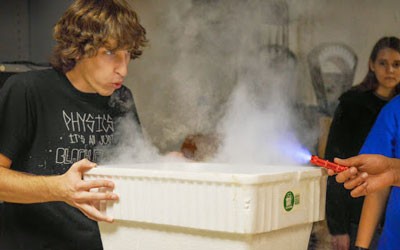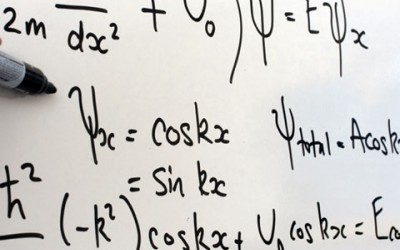State-of-the art equipment for graduate students’ experimental research in optics and condensed matter physics is provided in the physics department. The equipment includes optical, electronic, and cryogenic instruments, surface science techniques and materials growth equipment. Examples are Atomic Force Microscopy, Auger Electron Spectroscopy, Ellipsometry, High-Resolution Low Energy Electron Diffraction, Reflection High-Energy Electron Diffraction, X-Ray Crystallography, and Super-Resolution Microscopy. Also available for research are terahertz radiation sources and ultrafast laser systems. Students engage in absorption, light scattering, and photoluminescence spectroscopy using systems operating from the terahertz frequency band to the ultraviolet part of the electromagnetic spectrum.
Students interested in nanofabrication will find excellent facilities in Rensselaer’s Micro and Nano-Fabrication Clean Room (MNCR). This is a state-of-the-art, 5,700-square-foot, Class 100 multi-user facility which supports research and education in nanotechnology, biotechnology, microelectronics, solid state lighting, energy, and other fields. The MNCR offers infrastructure for end-to-end device fabrication, characterization, metrology and testing by the graduate student user on substrates ranging from a few millimeters in size to full wafers 200 mm in diameter for high-speed electronics, power devices, integrated circuits, microsystems, and other applications. Fabrication of structures as small as 20 nm is possible in the MNCR, and structures as small as 1.5 nm can be achieved. In addition, the facility has several dedicated staff members to provide process solutions, training, and teaching.
The Center for Biotechnology and Interdisciplinary Research on our campus offers extensive and high-quality facilities for students’ experimental research in biological physics at the molecular, cellular and tissue level.
Students conducting research in theoretical condensed matter physics use Rensselaer’s own supercomputer. The Blue Gene/Q is one of the world’s most powerful university-based supercomputers. Theoretical methods implemented by our students on this machine and other computers are density functional theory calculations, Monte-Carlo Simulations as well as classical and quantum mechanical molecular dynamics simulation.
In addition, the Department’s research activities are affiliated with numerous research centers on campus: The Center for Computational Innovations, the Center for Future Energy Systems, the Center for Materials, Devices and Integrated Systems, the Network Science and Technology Center, the Institute for Data Exploration and Applications, the Rensselaer Nanotechnology Center, the Scientific Computation Research Center, the Smart Lighting Engineering Research Center, and the Data Science Research Center.




